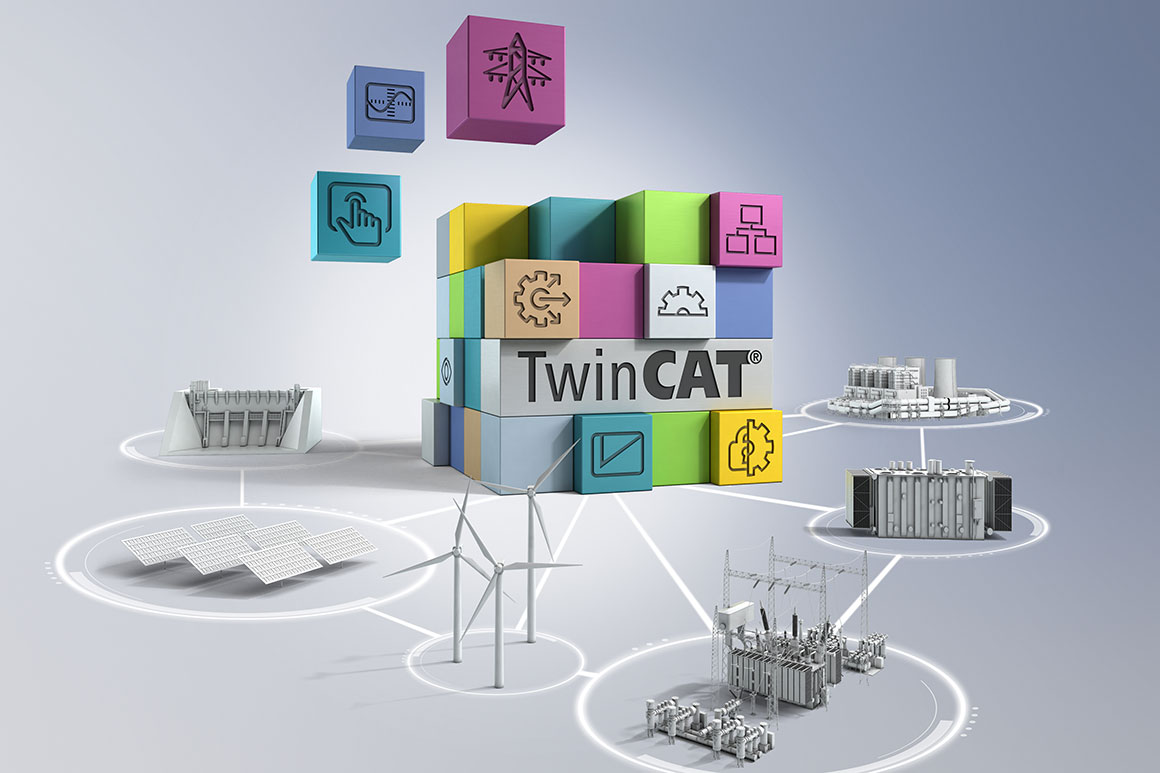

Wind farm networking with EtherCAT sets new benchmarks due to its high speed: in case of an LVRT, the setpoint values can be specified for all wind turbines in the entire farm network in less than 1 ms and the control of current, voltage, and frequency can be adapted efficiently. The existing fibre-optic-based Ethernet infrastructure can be used for this purpose up to distances of 20 km without a loss of speed. Even the synchronization of the IGBTs of converters within a wind farm can be realized with this technology.
Wind farm networking with EtherCAT is not only faster compared to conventional Ethernet solutions, but also offers substantial cost benefits by eliminating the need for costly switches or hubs. With the EtherCAT power measurement terminal EL3783 integrated into the automation system, momentary current and voltage values can be measured at high frequencies with up to 10,000 samples/s. With the EtherCAT distributed clocks functionality, the measured values of all wind turbines and the measurement at the feed-in point of a farm can be synchronized to a timeframe smaller than 1 μs. TwinCAT supports the standardized IEC 61400-25 communication protocol for wind turbines, which simplifies the monitoring and control of heterogeneous wind farm system environments, including the connection to electric utilities.




